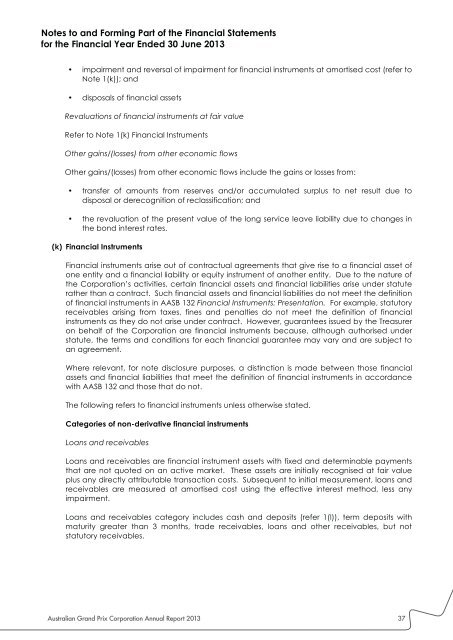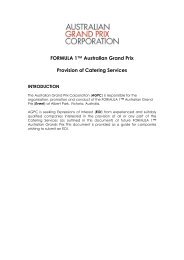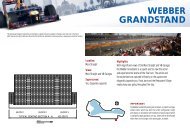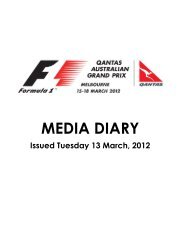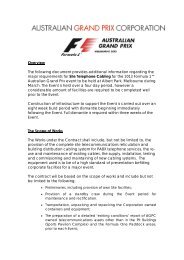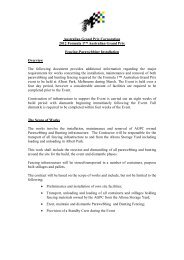2013 AnnuAl RepoRt - Australian Grand Prix
2013 AnnuAl RepoRt - Australian Grand Prix
2013 AnnuAl RepoRt - Australian Grand Prix
Create successful ePaper yourself
Turn your PDF publications into a flip-book with our unique Google optimized e-Paper software.
Notes to and Forming Part of the Financial Statementsfor the Financial Year Ended 30 June <strong>2013</strong>• impairment and reversal of impairment for financial instruments at amortised cost (refer toNote 1(k)); and• disposals of financial assetsRevaluations of financial instruments at fair valueRefer to Note 1(k) Financial InstrumentsOther gains/(losses) from other economic flowsOther gains/(losses) from other economic flows include the gains or losses from:• transfer of amounts from reserves and/or accumulated surplus to net result due todisposal or derecognition of reclassification; and• the revaluation of the present value of the long service leave liability due to changes inthe bond interest rates.(k) Financial InstrumentsFinancial instruments arise out of contractual agreements that give rise to a financial asset ofone entity and a financial liability or equity instrument of another entity. Due to the nature ofthe Corporation’s activities, certain financial assets and financial liabilities arise under statuterather than a contract. Such financial assets and financial liabilities do not meet the definitionof financial instruments in AASB 132 Financial Instruments: Presentation. For example, statutoryreceivables arising from taxes, fines and penalties do not meet the definition of financialinstruments as they do not arise under contract. However, guarantees issued by the Treasureron behalf of the Corporation are financial instruments because, although authorised understatute, the terms and conditions for each financial guarantee may vary and are subject toan agreement.Where relevant, for note disclosure purposes, a distinction is made between those financialassets and financial liabilities that meet the definition of financial instruments in accordancewith AASB 132 and those that do not.The following refers to financial instruments unless otherwise stated.Categories of non-derivative financial instrumentsLoans and receivablesLoans and receivables are financial instrument assets with fixed and determinable paymentsthat are not quoted on an active market. These assets are initially recognised at fair valueplus any directly attributable transaction costs. Subsequent to initial measurement, loans andreceivables are measured at amortised cost using the effective interest method, less anyimpairment.Loans and receivables category includes cash and deposits (refer 1(l)), term deposits withmaturity greater than 3 months, trade receivables, loans and other receivables, but notstatutory receivables.<strong>Australian</strong> <strong>Grand</strong> <strong>Prix</strong> Corporation Annual Report <strong>2013</strong> 3737


